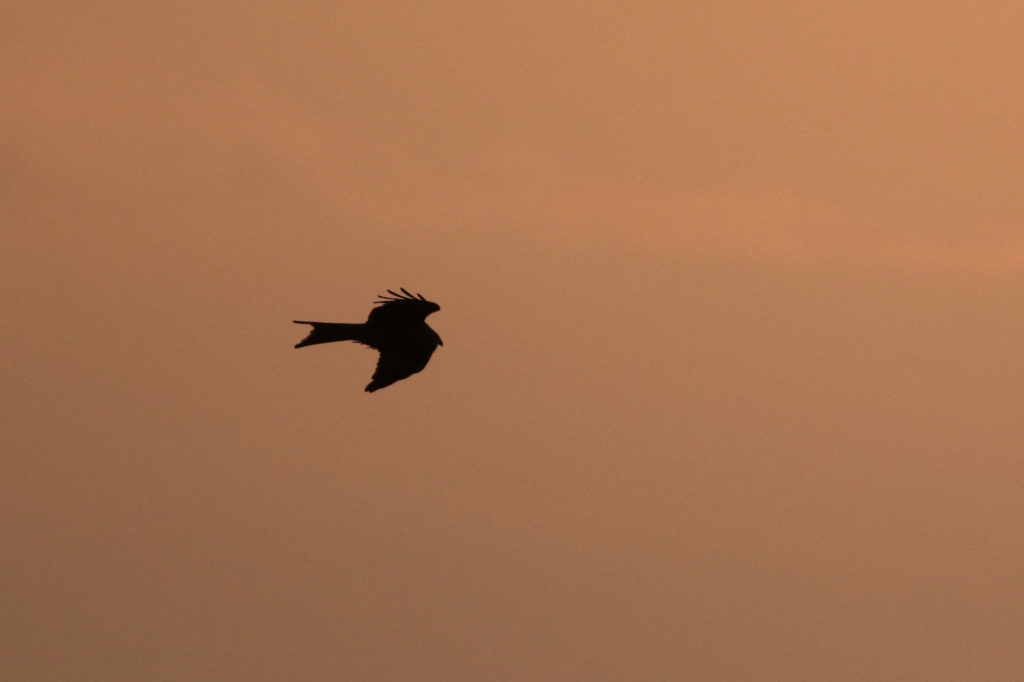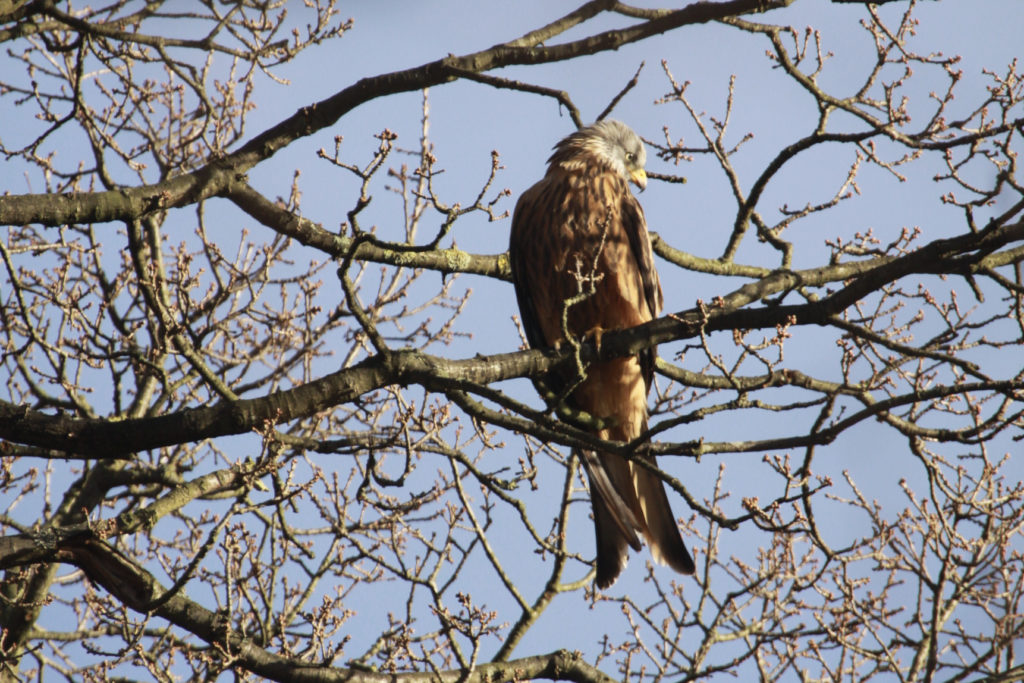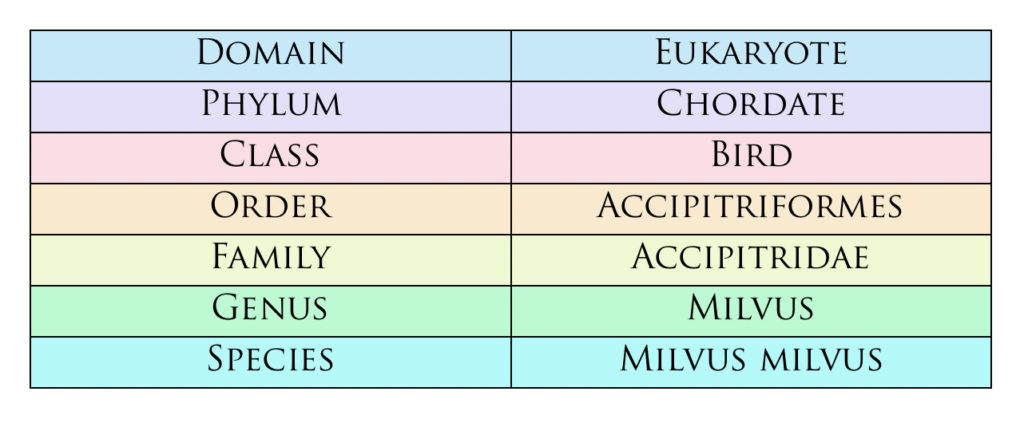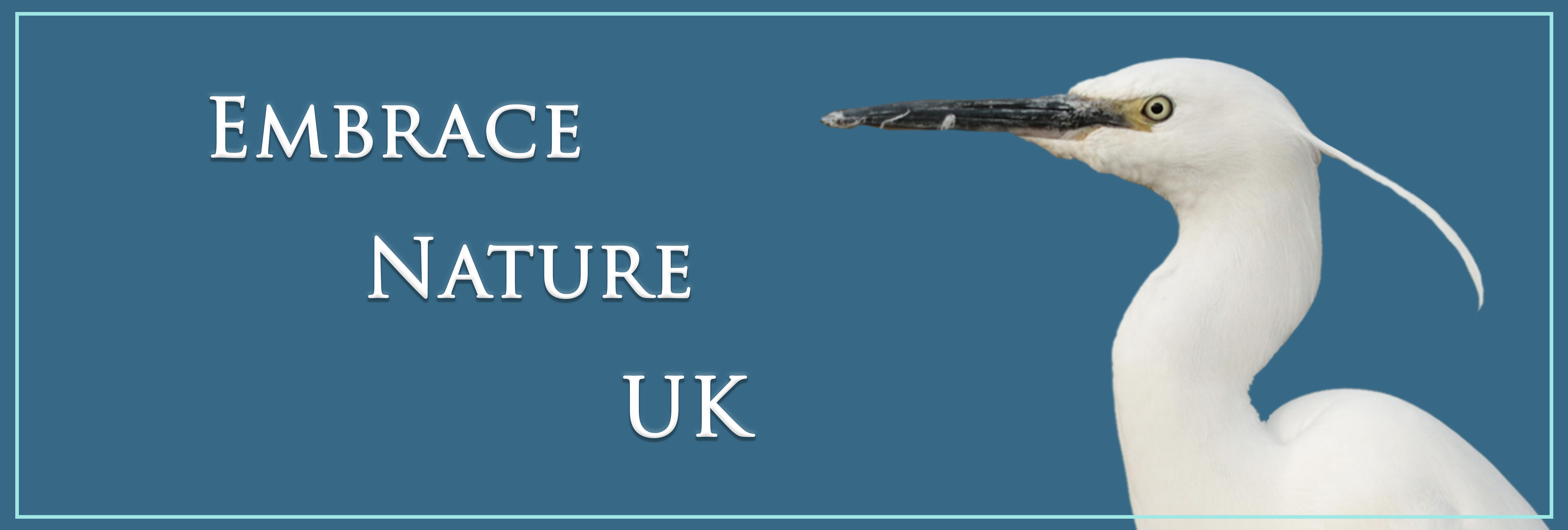Scientific Name: Milvus milvus

Wingspan:
Approximately 145 – 195 cm
Description:
The most notable feature on a red kite is its forked tail. They tend to twist and turn their tail in flight in order to maintain control. Adults appear red in sunlight but juveniles exhibit less prominent colours and almost look washed-out in comparison.
A red kite’s call usually contains one long whistle followed by around 4 sets of shorter whistles that fall to a lower note during the call. The 4 sets are all uniform.
Red kites are quite common now in a lot of the UK as a result of successful reintroduction. For good close views visit feeding stations (see useful links below).

Identifying Sex:
The easiest way to tell males and females apart is when you see them together. They display the same colouration but the females are often larger than males. Males can normally be seen moving their tails more than females do and the tail is likely to be more deeply forked.
Their courtship display is enjoyable to watch as they twist and turn in the sky; sometimes flying towards each other to pass food or or pull away at the last second.
Diet:
Red kites are often opportunistic when hunting and are known to take small mammals and other creatures of similar size on occasion. They mostly eat carrion and supplement it with worms.

Breeding:
Red kites normally mate for life though sometimes an unsuccessful breeding season may prompt them to find a new mate. They’re generally ready to breed from within their second or third year. They take to the skies around March to perform their courtship ‘dance’ and at this time they will also begin to build their nests. Nesting takes place high up in the trees but the nests are built in an easily-accessed location for the birds.
In April the female lays between 1 and 4 eggs. Both the male and female incubate the eggs for around 30 or so days with the female doing the majority of the incubation. There is often some delay between the hatching of the eggs, which ensures that the eldest chick stands the best chance of survival if food is short.
The red kites fledge at around 7-8 weeks old though may still benefit from food provided by their parents for their first two weeks of freedom.

On a Personal Note:
We are very fortunate to be based in an excellent area for red kites and so have enjoyed the opportunity to regularly observe their behaviour; from their courtship dance to litter-picking from the street. This litter will then have been used to line a nest. The kites can be entertainingly acrobatic but more often than not can be observed soaring over a variety of habitats including motorway verges. Some of our most numerous sightings of birds of prey have been on the motorway though this bird-watching activity is best left to passengers!
From years of running around the countryside and sometimes running very poorly, it often feels that red kites are flying close by awaiting the moment where we drop dead from exhaustion. None of us have yet been eaten by a red kite, but there is still time…..
Red Kite Taxonomy:


Useful Links:
Read more about red kites on the RSPB website here.
Find out more about Yorkshire’s red kites here.
Read more on ‘The Wildlife Trusts’ website.
See what the ‘Chilterns’ website has to say about red kites.
Learn more about red kites from www.redkites.net.
Plan a visit to Gigrin Farm to get a closer look at these marvellous birds.
Or plan a trip to Llanddeusant to witness the kites.
Additional Reading:
Check out these books from amazon.co.uk:


